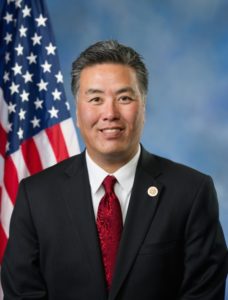WASHINGTON — What role, if any, does VA have in preventing the recruitment of veterans into organizations that promote violence against the United States and its citizens? A trio of hearings hosted by the House Veterans Affairs Committee explored the question.
The first of the hearings was held last month.
“From Oklahoma City in 1994 to Fort Hood in 2009 to Thousand Oaks, California, in 2018, and even the assault on our United States Capitol in January, misguided individuals have committed violence against our fellow citizens in pursuit of misguided objectives. … This directly impacts the work of our committee, as an alarming number of these individuals have served in the armed forces,” explained the Chairman Mark Takano (D-CA). “[We are] developing opportunities to help veterans who are snared by these domestic terrorist groups. These efforts could include helping them recognize when they are being recruited, aiding them in exiting these groups and addressing the pervasive underlying factors that lead to such recruitment, such as mental health, unemployment and social isolation.”
While the two future hearings will look at recruitment efforts targeting veterans and resources that are currently available to help them, the first hearing sought to define the problem and determine whether DoD and VA have a role.
“The question is not whether domestic violent extremist groups are recruiting and organizing veterans to commit violence. We already know this to be true. The questions are how extensive is this problem and what are we going to do about it,” declared Joe Plenzler, a retired Marine Corps lieutenant colonel and expert on the recruitment of veterans by extremist groups. “For decades, violent extremist groups have sought to infiltrate our military to gain access to tactical training and explosives. They have also recruited veterans because of their military skills, leadership and ability to organize. They especially target isolated, impoverished veterans—those struggling to adapt to the civilian world. They provide them with a tribe, a simplistic view of the world and its problems, actionable solutions and a sense of purpose.”
While the percentage of these groups that are made up of veterans and active duty servicemembers is unknown, the general consensus among those testifying was that it was growing.
Curtailing Growth of Extremism
VA and DoD could have a role in curtailing that growth, explained Cynthia Miller-Idriss, PhD, MPP, MA, director of the Polarization and Extremism Research and Innovation Lab at American University.
“There are three kinds of investment to prevent veterans’ recruitment into extremist movements,” she said. “Veterans need resources to support their reintegration after service through counseling and support for needs that may be contributory causes of vulnerability. And [those working with veterans] should receive staff training to recognize warning signs and early red flags of extremist radicalization.”
DoD and VA should also invest in preemptive evidence-based inoculation approaches that would make them more resistant to radicalization efforts and disinformation campaigns, she added.
“Inoculation approaches work across ideologies and do not target specific communities or label some people more at risk than others,” Miller-Idriss said. “Rather, these approaches provide blanket training for everyone. Because every individual needs to be equipped with the tools to recognize disinformation and resist propaganda.”
These efforts could dovetail with work that VA is already attempting to do in helping veterans transition back to civilian life.
“For a lot of veterans, it’s a challenge to go from being in uniform in one culture to rejoining the civilian world and find meaning, occupation reestablish a sense of community, and to build all of that on a foundation of meaning,” Plenzler noted. “One of the most corrosive things that come with violent extremists trying to recruit veterans is that they form a cancer within our community, and they lead a lot of veterans down the wrong path.”
Seth Jones, director of the Transnational Threats Project at the Center for Strategic and International Studies, explained that one of the first things that the government should invest in is research into how veterans and servicemembers are recruited and in what numbers.
“[Once that data is available,] then the conversation between DoD and VA should be on how we craft programs together based on what the analysis indicates on radicalization,” Jones said. “How do we craft solutions? How do we support our veterans? Is it identification of radicalization? Is it bringing families in to support them? Crafting policy will depend on these answers and VA will be a really important part of that solution.”


